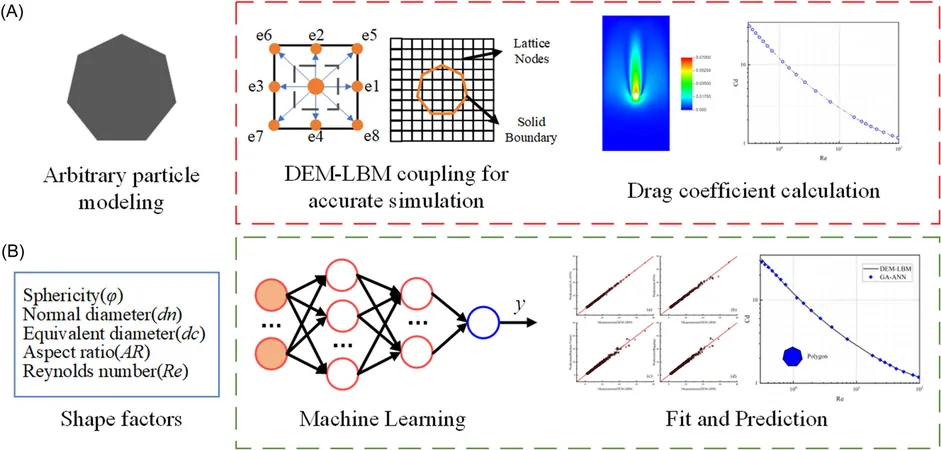
Flow of the Future: Revolutionary AI Models Unravel Complex Particle Drag Coefficients!
2024-11-05
Author: John Tan
Groundbreaking Study Changing the Game
In a groundbreaking study that could transform industries ranging from chemical processing to aerospace, researchers have tackled the long-standing challenge of accurately predicting how irregular particles move through fluids. The drag coefficient, a crucial element in understanding particle behavior within turbulent liquid environments, has historically been difficult to model for non-spherical particles. However, a team from Nanjing University of Science and Technology and Westlake University is changing the game!
Innovative Research and Methodology
Published in the International Journal of Mechanical System Dynamics, their innovative research integrates machine learning with advanced numerical methods, specifically combining the discrete element method (DEM) with the lattice Boltzmann method (LBM). By leveraging this sophisticated approach, the team compiled a high-accuracy dataset essential for developing predictive models of drag coefficients for polygonal particles.
Promising Results
Remarkably, one of their machine learning models achieved a prediction error of less than 5%! This significant advancement not only demonstrates the power of AI in fluid dynamics but also marks a pivotal moment in research on particle-fluid interactions, setting a new benchmark for future studies.
Implications and Applications
Professor Cheng Cheng, a lead researcher on this project, emphasized the implications of their findings: "This study showcases the immense potential of machine learning to solve complex fluid dynamics problems. By leveraging numerical simulations and artificial intelligence (AI), we've reached an unprecedented level of accuracy in predicting the drag coefficients of polygonal particles, which could have far-reaching impacts in both academic and industrial settings."
Conclusion: A New Era in Fluid Dynamics
But why does this matter? The ability to predict drag coefficients with such precision opens the door to a host of applications across various fields. Industries such as environmental engineering, chemical processing, and aerospace technology stand to benefit immensely. More accurate drag predictions can enhance processes such as sedimentation and filtration, leading to improved efficiencies in manufacturing and product design. It can even optimize propulsion systems in spacecraft, potentially revolutionizing how we approach space travel!
As we move forward, the implications of this research could reshape our understanding of fluid dynamics, mobile particle systems, and their applications in modern engineering. The findings herald exciting advancements, promising to spark a new era of innovation in industrial systems. The future of fluid dynamics is not only here but is being propelled forward by the power of AI!


 Brasil (PT)
Brasil (PT)
 Canada (EN)
Canada (EN)
 Chile (ES)
Chile (ES)
 España (ES)
España (ES)
 France (FR)
France (FR)
 Hong Kong (EN)
Hong Kong (EN)
 Italia (IT)
Italia (IT)
 日本 (JA)
日本 (JA)
 Magyarország (HU)
Magyarország (HU)
 Norge (NO)
Norge (NO)
 Polska (PL)
Polska (PL)
 Schweiz (DE)
Schweiz (DE)
 Singapore (EN)
Singapore (EN)
 Sverige (SV)
Sverige (SV)
 Suomi (FI)
Suomi (FI)
 Türkiye (TR)
Türkiye (TR)